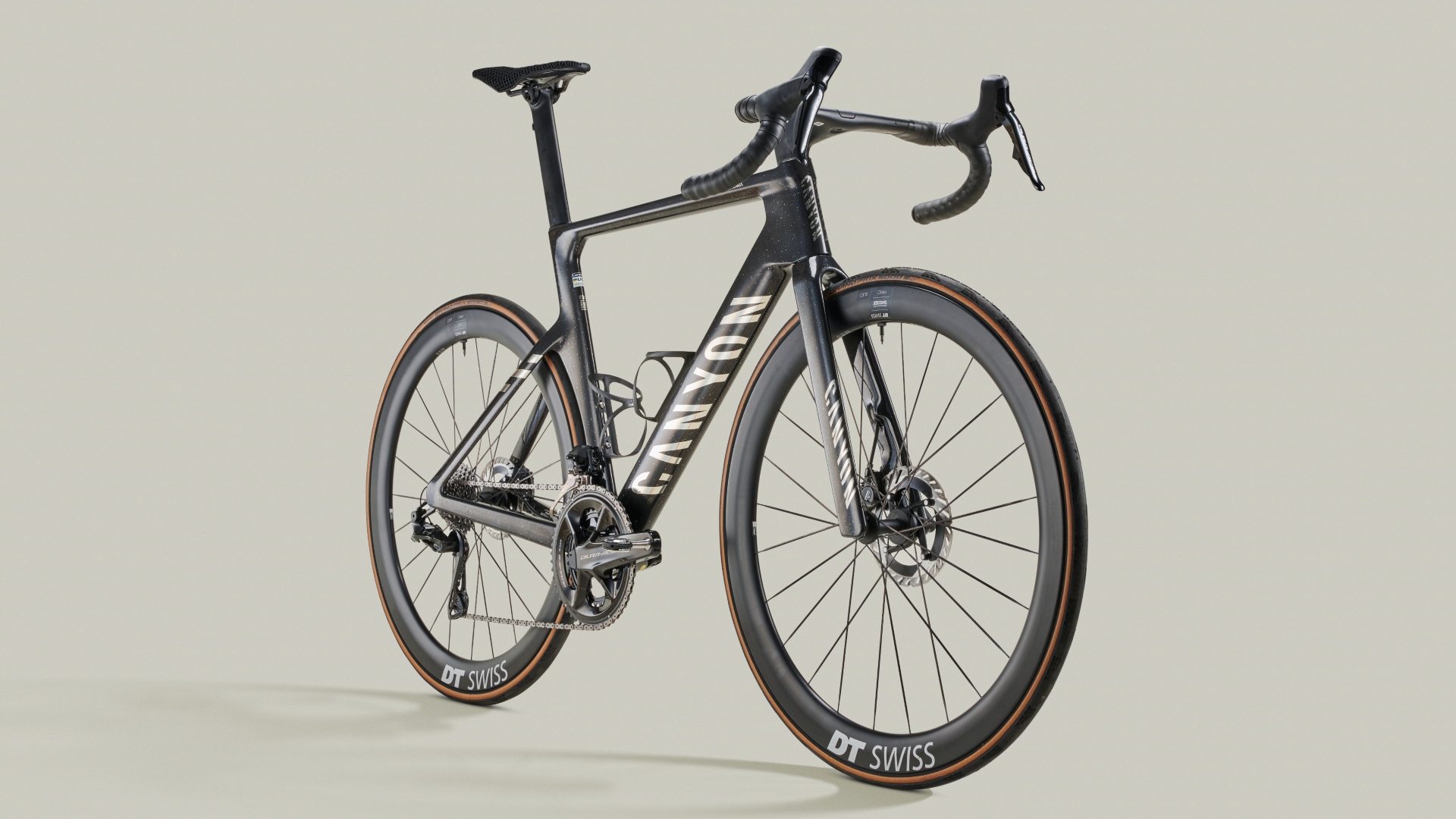
Canyon’s latest Aeroad CFR has made waves this season, with multiple Tour de France victories and a clever design philosophy cementing its position as one of the best road bikes available today.
It’s billed as the “fastest bike in the peloton,” with world-class sprinters already adding stage wins to its résumé. The bike was designed with input from riders like Mathieu van der Poel - the question is, will we see this bike painted in rainbow colours for another twelve months?
After testing it across various parcours, I’ve found that the details and usability upgrades make this bike stand out. But is it really still good value, and has it become my new benchmark bike?
Canyon Aeroad CFR: construction
The Aeroad has always been a machine that is clearly engineered with racing in mind, and that hasn't changed with the new Aeroad CFR. The frame’s focus on aerodynamics remains central to its design, but Canyon has introduced some subtle changes to refine performance and ease of use.
Aero first though - one of the most significant updates is the reshaping of key frame areas, such as a narrower, and elongated head tube and thinner fork blades, which improve airflow and reduce drag. The slimmer seatstays, seat tube, and seatpost still feature a streamlined silhouette, though Canyon has slightly reduced weight at the rear.
The changes are slight in aesthetic, and slight on paper too, culminating in just a 1.6-watt gain at zero degrees of yaw. More than anything, this shows just how tight competition is at the top for the best road bikes, which makes features other than aero performance more important differentiating factors...

The star feature of the Aeroad is the 'Pace Bar' cockpit system. It’s modular and customizable, with removable and adjustable drop ends, allowing riders to optimize their bar width for aerodynamics. In its narrowest 35cm setup, Canyon claims you can save 14 watts at 40km/h - a bold figure, but one that feels believable after having tested it. In fact, comparing the numbers to Cycling Weekly's very own testing on ultra-narrow handlebars, the 14-watt saving certainly passes the common sense check.
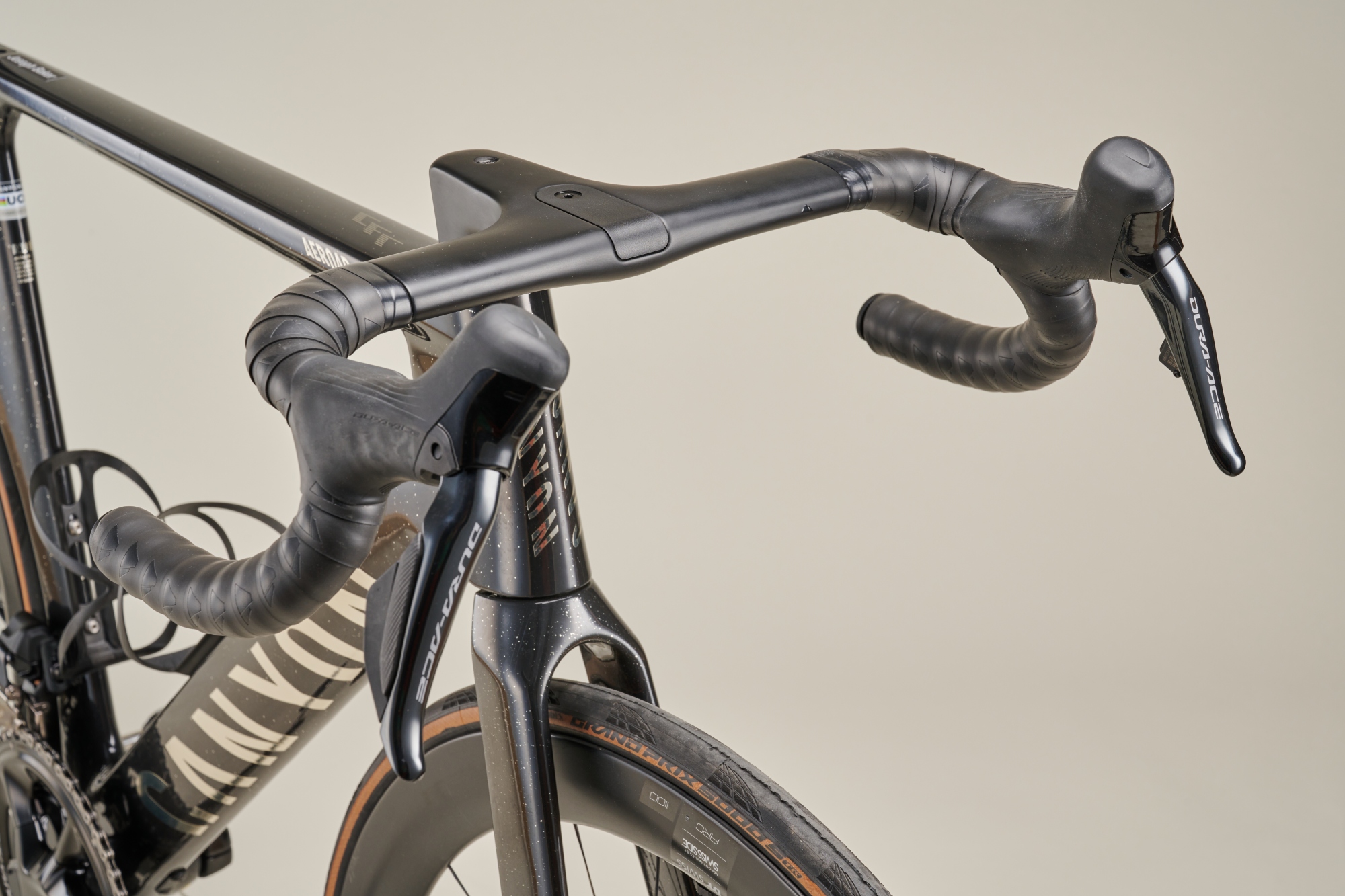
The only downside is the lack of custom stem lengths or bar shapes at the point of purchase. It seems almost baffling to me that Canyon has total control over its manufacturing process and builds, yet doesn't offer this customization option. Of course, it's no different to other brands, but being a direct-to-consumer brand, you will have to purchase a new bar and sell the old one yourself, whereas most retailers or concept stores may offer a like-for-like swap. That being said, the adjustability of the cockpit is user-friendly, and swapping the drops at home took me around half an hour from start to finish.
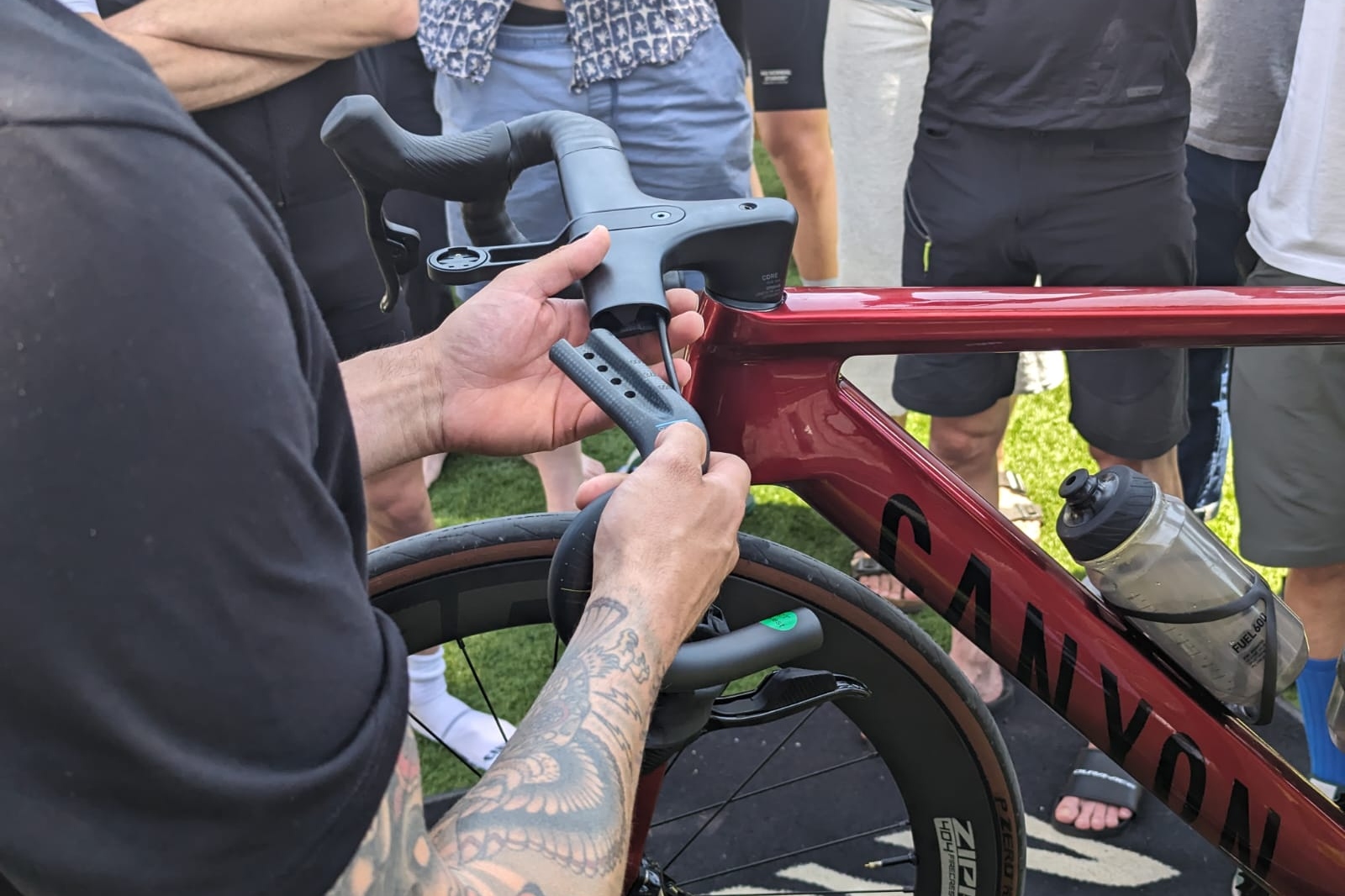
The rest of the frame is designed with everyday riders in mind - and this is where the bike is ahead of almost anything else on the market. Canyon has restored hope to the home mechanic community by making every single regularly used bolt a T25 head - hooray! With every bolt now T25, including a bit cleverly hidden in the thru-axle, you’ll no longer need a multitool for day-to-day adjustments.
Canyon has ditched the old, finicky seat clamp for a more traditional two-bolt setup too, making saddle adjustments much easier. The headset has also been overhauled to include hermetically sealed bearings, which should stand up to pressure washing and tough weather conditions - ideal for the abominable weather we often have in the UK.

As for the build I tested, Canyon provided the bike equipped with Shimano’s top-tier Dura-Ace Di2 groupset, DT Swiss ARC 1100 Dicut wheels, and Continental GP5000 S TR tyres (25mm front, 28mm rear). The Shimano power meter integrated into the crankset is also standard on the top model.
As for weight, Canyon has taken a minor hit compared to the outgoing model, with the size medium frame coming in at 960g. However, this extra heft is well-spent in adding structural improvements, and the complete bike still tips the scales at a very race-worthy 7.07kg. By all means a light bike, but remember, this is a top-spec model.
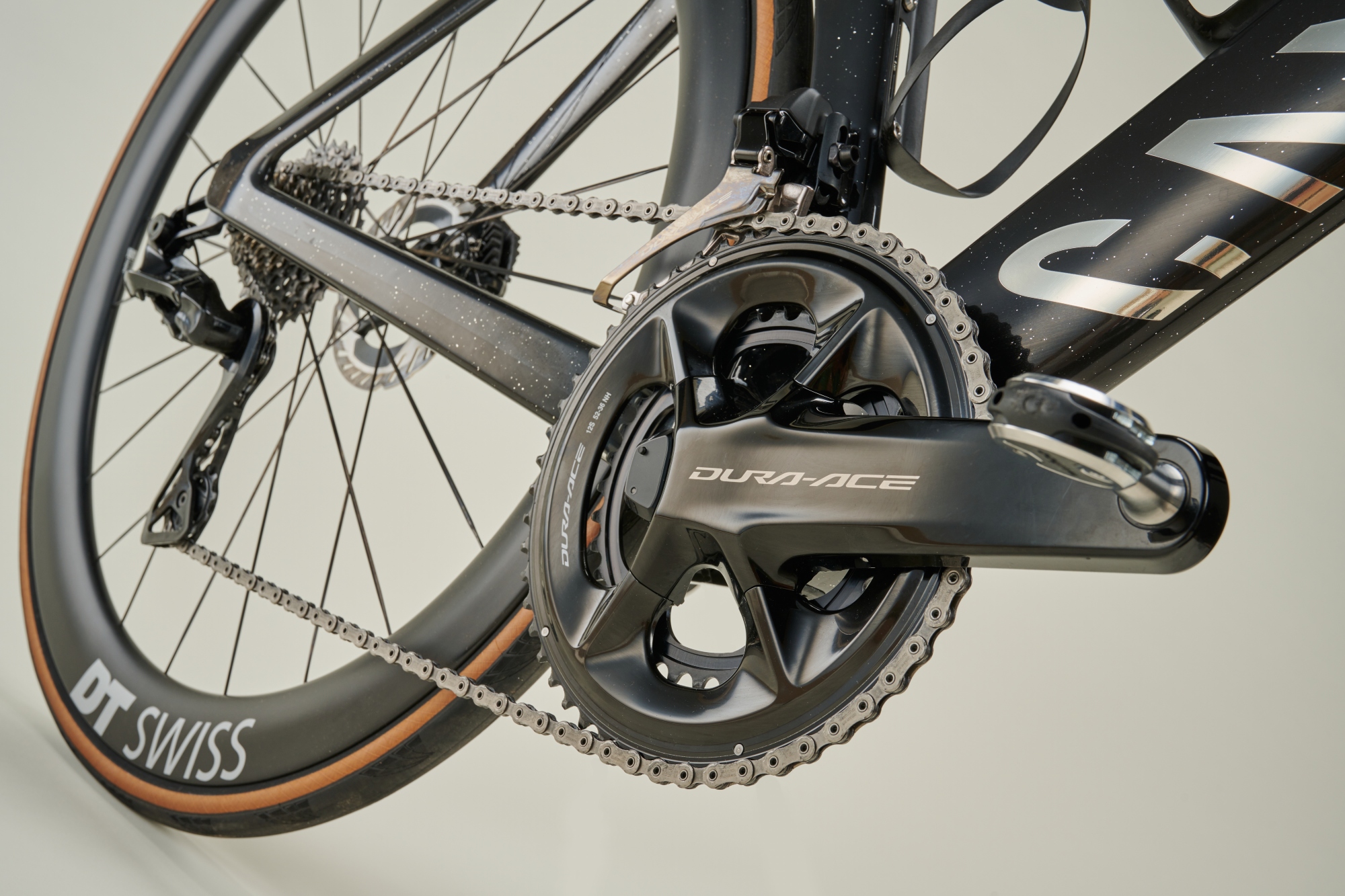
Canyon Aeroad CFR: the ride
Over the last few weeks, the Canyon Aeroad CFR has been subject to my usual testing and scrutineering. I have ridden the bike on all terrain from the rolling hills of the Cotswolds to high-paced group rides, and the bike has continued to impress me throughout.
It certainly excels in environments where speed and aerodynamics are essential. On flatter terrain, this bike feels unstoppable, providing a serenely smooth ride quality. The stiffness of the frame is immediately noticeable; whether accelerating out of corners or powering through sprints, the Aeroad CFR responds with razor-sharp precision. This is in no small part down to the tangible improvements made at the front and rear compared to the bike's predecessor - the stiffer head tube really makes a difference when you descend with heavy-handed steering inputs. It’s the kind of bike that just begs to be ridden fast, making it an absolute joy during competitive group rides or criteriums.
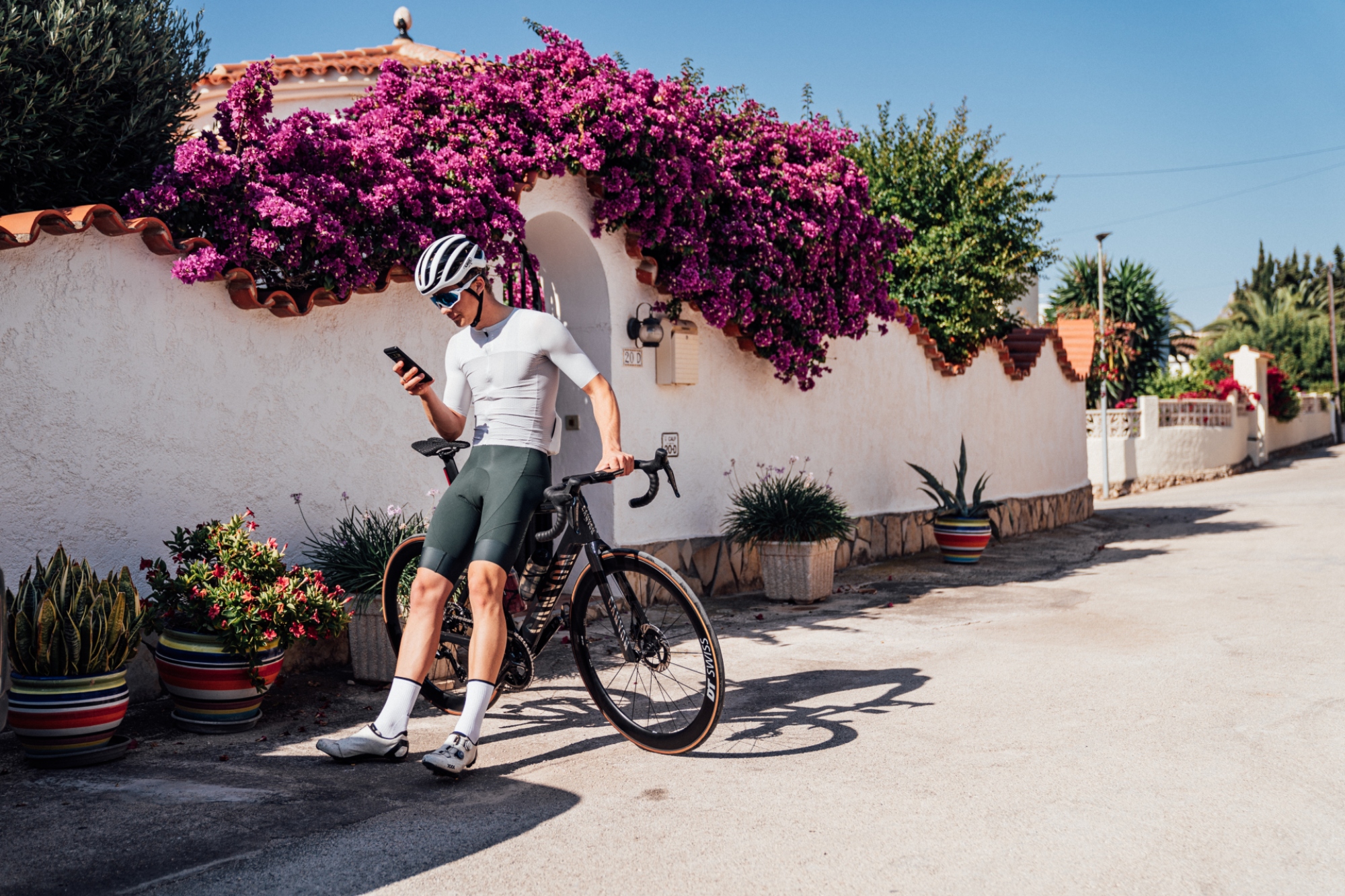
Climbing, however, is where I started to notice some compromises. On short, punchy ascents, the Aeroad’s stiffness makes it a capable performer, allowing you to muscle up small hills with ease. But on longer, more sustained climbs, the bike feels a little less forgiving. It’s still responsive, but the added weight compared to lighter, more nimble race bikes like the Specialized Tarmac SL8 becomes apparent. The Aeroad can certainly handle the climbs, but it’s clear that its true calling is on the flats or in fast-paced racing scenarios.
One point of contention for me has been the new aero drop handlebars. While I appreciate the narrow 35cm width for the aerodynamic gains, I’ve found the shallow drop a bit problematic. During sprint efforts, my wrists often collide with the tops of the bars, making the position feel less natural. I’ve shared this feedback with a few riding friends, and they encountered the same issue. Offering more variety in handlebar drop shapes would be a simple fix that could enhance the bike’s usability for a wider range of riders. It's important to note though, that this is purely a personal preference and not how the bike comes as standard. It's just something to bear in mind if you do decide to opt for the aero drop package.
Canyon Aeroad CFR: value
When comparing the Canyon Aeroad CFR to other high-end aero road bikes, its value proposition becomes clear. My test model, equipped with Shimano Dura-Ace Di2, comes in at £9,249 / $9,999 - significantly undercutting the Specialized S-Works Tarmac SL8, which retails at £12,000 / $13,000. The SL8 remains my benchmark for race bikes, particularly for its nimble handling and superior climbing ability. However, the Aeroad pulls ahead in terms of sprinting performance and stability on fast, flat roads. It’s one of the best aero bikes I’ve tested in that regard, but it doesn’t quite match the all-around versatility of the SL8.
That said, the Aeroad’s price is hard to argue with. Canyon’s direct-to-consumer model offers significant savings over competitors like Specialized and Trek, but there are some caveats to consider. The adjustable Pace Bar system, while innovative, comes with added costs. A new set of aero drops will set you back £229.95 / $229.95, and the T-bar stem retails for £199.95 / $199.95.
These aren’t insurmountable expenses, but they do chip away at the value that Canyon’s pricing initially promises. Moreover, since Canyon operates direct-to-consumer, you won’t get the same level of hands-on support from a local bike shop, which could be a drawback for some buyers.







